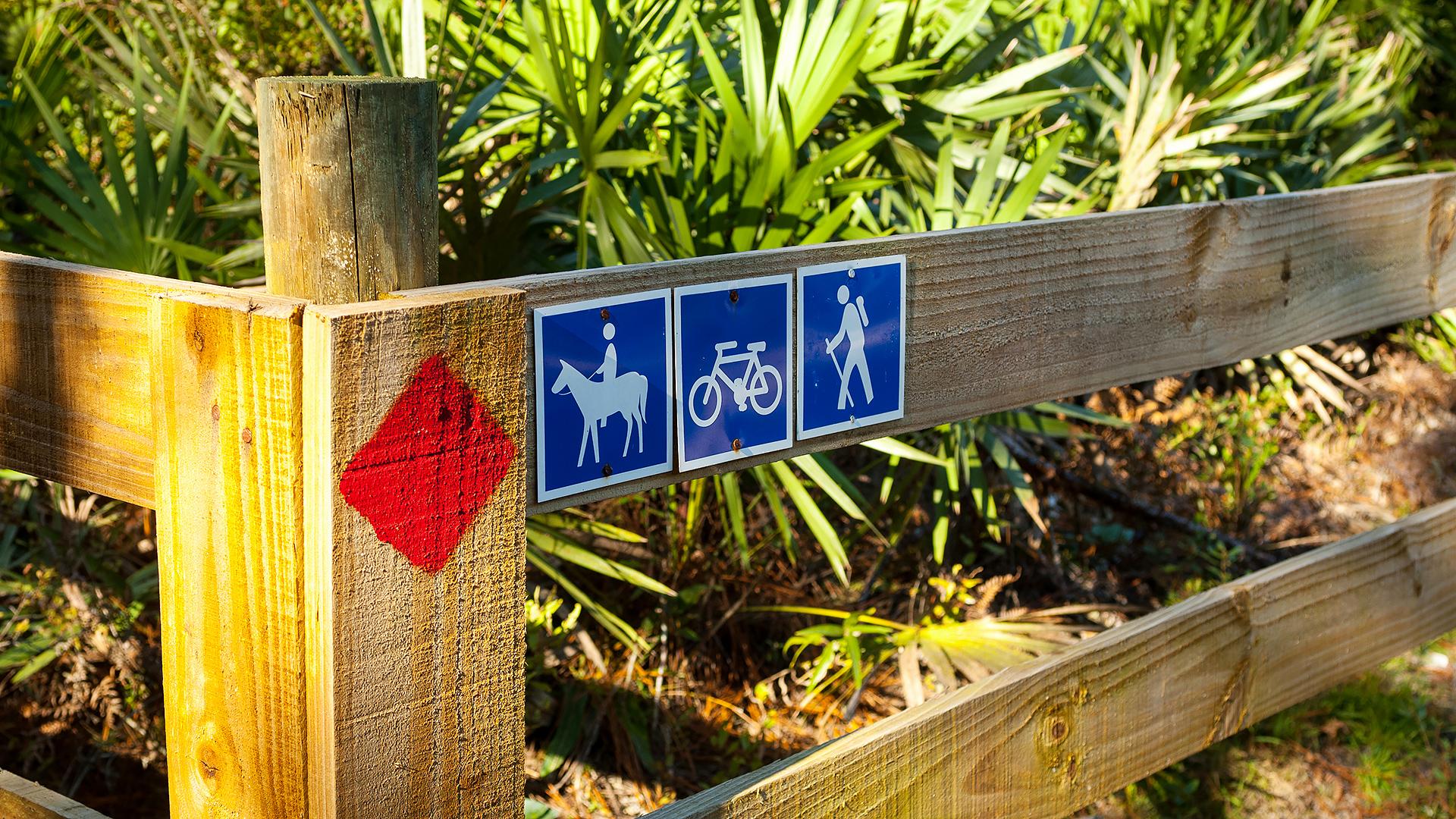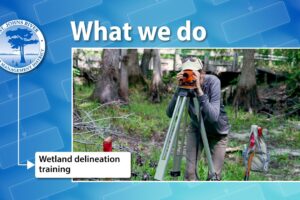District lands play a distinct role in outdoor adventure
May 23, 2024
A trail marker at the entrance of the District’s Deep Creek North Conservation Area showcases activities available at this location.
If you’re looking to take a break from the hustle and bustle of everyday life and immerse yourself in the natural environment, St. Johns River Water Management District lands are a great option for you to explore.
District lands fulfill a specific niche when it comes to outdoor recreation. While you won’t find park rangers, basketball courts, playgrounds or contemporary conveniences like bathrooms, you also won’t find long lines or crowds on most District conservation areas, making these lands appealing for those looking for solitude and a way to connect with nature.
“District lands are typically lesser-known gems that offer passive recreation,” explains Patrick McCord, a land resource specialist for the District. “They provide natural, undeveloped spaces to get outside and enjoy a calm, serene setting. They are often in remote areas, so you’re more likely to see wildlife, which is a huge draw for many people.”
A visit to District land is different from what you’d experience at a state or municipal park. District lands are resource-based, offering low-intensity recreational activities driven by the landscape like sightseeing, hiking, fishing, birding and wildlife viewing, paddling, camping, bicycling or horseback riding. State and municipal parks are more user-oriented, meaning recreation is driven by facilities and infrastructure. Take camping, for example. Compared to a state park camping area, where tents and motorhomes are in close proximity to one another and access to running water is a given, camping on a District property is a far different experience. While the District does offer 20 reservable campsites where you can bring your passenger vehicle into the campsite (no recreational vehicles), most of its primitive campsites are first-come/first-served and accessible only by hiking, boating, bicycling or horseback, providing more of a backcountry experience. Campsites typically have a picnic table, a fire ring and a few benches, at a minimum. Some sites may also have a covered pavilion, barbeque grill, non-potable pitcher pump and a few with portable toilets, but it’s still far less infrastructure than what you’d find at a state park campground.
The District acquires land to support its core missions, which include flood protection, water supply, water quality, and protection of natural systems. In addition to supporting these missions, 42 conservation areas are open for the public to enjoy. Approximately 430,000 acres of land are managed by the District’s Bureau of Land Resources. The properties exemplify the best of everything natural Florida has to offer, including coastal marshes, sandhills, live oak hammocks, longleaf pine forests, open fields, rivers, creeks, lakes and springs.
“Recreation is really a secondary benefit of the District’s land acquisitions, which differentiates them from a sports complex or athletic field that was developed specifically for people to play games or participate in specific activities,” McCord says. “Our goal is to maintain and restore the natural habitats and ecosystems on the property while also letting the public enjoy them in compatible, harmonious ways.”
Comparisons can be difficult between resource-based and user-oriented recreation types. They are both highly beneficial and necessary, but also very different in the services they provide and the manner and environment in which the services are delivered.
“Some people want to be able to go hiking and not see anyone; just hear the sounds of wildlife and nature,” McCord says. “Experiencing solitude and unspoiled tranquility in the outdoors — there’s not a lot of places you can do that these days. That’s the type of experience we hope to provide on District lands.”
For more information about the District’s 42 conservation areas, which include more than 100 trailhead parking areas, 530 miles of multi-use trails, 53 boat launches, 69 campsites, and a multitude of picnic pavilions, observation towers, boardwalks and related structures, visit www.sjrwmd.com/lands/recreation.






